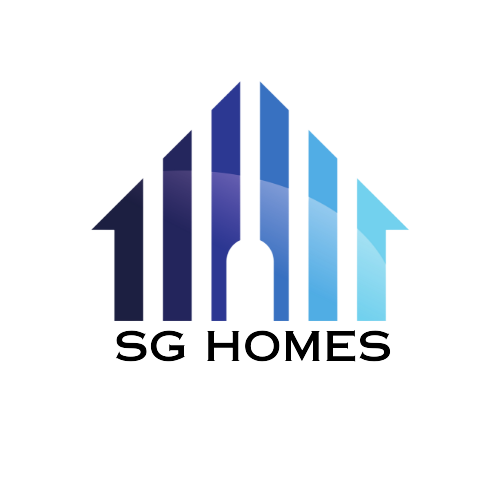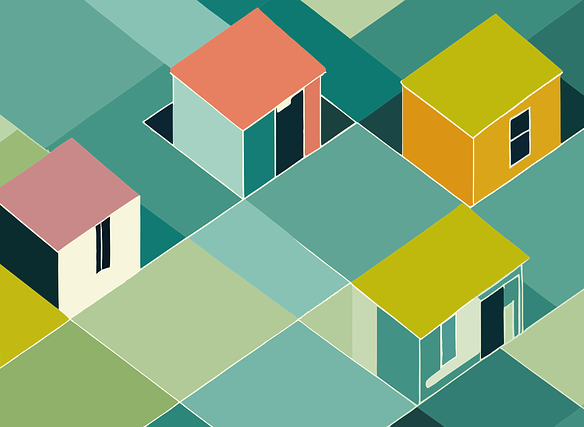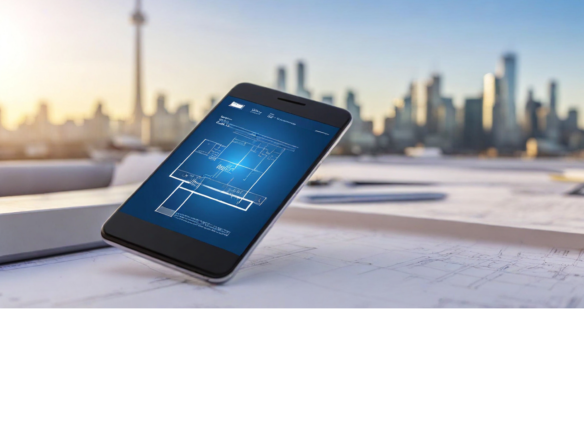The Greater Toronto Area (GTA) is known for its vibrant real estate market, attracting investors and homebuyers from around the world. As the population continues to grow and urbanization intensifies, the future of real estate development in the GTA is poised for exciting opportunities and challenges. In this blog, we’ll explore some key trends and factors that are shaping the future of real estate development in this dynamic region.
Urban Intensification
Urban intensification is a crucial concept in modern urban planning, as it focuses on maximizing land use and creating sustainable and vibrant urban environments. By implementing higher density buildings and mixed-use developments, cities can effectively make the most of their limited space and resources, while also addressing key urban challenges such as housing shortages and traffic congestion.
Maximizing land use through higher density buildings
One of the key strategies for urban intensification is the construction of higher density buildings. This approach involves building taller structures to accommodate a larger number of people and activities within a smaller footprint. By doing so, cities can optimize land utilization and reduce the need for urban sprawl.
Higher density buildings offer several advantages. They can provide affordable housing options, as vertically stacked units are more cost-effective to build and maintain. Additionally, by concentrating people in a smaller area, higher density buildings promote walkability and reduce the dependency on private cars. This leads to more sustainable transportation patterns and less traffic congestion.
Moreover, higher density buildings often provide opportunities for mixed-use developments, which blend residential, commercial, and recreational spaces within the same building or area. This integration of various functions creates vibrant and dynamic neighborhoods where people can live, work, and enjoy leisure activities conveniently. Mixed-use developments not only maximize land use but also enhance community interaction and promote a sense of belonging.

Finding innovative ways to make the most of existing urban areas
In addition to constructing higher density buildings, urban intensification also focuses on finding innovative ways to make the most of existing urban areas. This approach emphasizes revitalizing underutilized or vacant spaces, as well as repurposing existing buildings to accommodate new functions.
By repurposing existing infrastructure, cities can save resources and preserve the architectural heritage of the area. For example, old factories can be transformed into trendy lofts or creative spaces, while warehouses can be converted into vibrant markets or art galleries. Such adaptive reuse not only preserves the character of the city but also adds a unique charm to the urban fabric.
Furthermore, urban intensification encourages the development of green and public spaces within existing urban areas. Parks, pocket parks, and rooftop gardens can be incorporated into the design of high-rise buildings, providing residents with essential outdoor spaces. These green oases improve air quality, mitigate the urban heat island effect, and promote a healthier and more sustainable urban environment.
In conclusion, urban intensification plays a vital role in creating livable, efficient, and vibrant cities. By maximizing land use through higher density buildings and embracing innovative approaches to optimize existing urban areas, cities can meet the challenges of rapid urbanization while ensuring sustainability and quality of life for their residents.
Transit-Oriented Development
Transit-Oriented Development (TOD) is an innovative urban planning approach that focuses on integrating residential and commercial developments around transit hubs. It aims to create vibrant, sustainable, and walkable communities that prioritize accessibility and reduce the reliance on private vehicles. By fostering a seamless connection between transportation systems and built environments, TOD promotes a more efficient and environmentally-friendly way of living.

Planning around transit hubs
One of the key elements of Transit-Oriented Development is the strategic location of residential and commercial buildings around transit hubs such as train stations, bus stops, or subway terminals. By doing so, people living or working in these developments have easy access to public transportation, reducing their dependency on cars and promoting the use of alternative modes of transportation.
Designing neighborhoods around transit hubs can also help reduce traffic congestion, as people are more likely to use public transportation when it is conveniently located. This, in turn, can lead to improved air quality and reduced greenhouse gas emissions.
Improving accessibility
One of the main objectives of Transit-Oriented Development is to improve accessibility for all members of the community, regardless of their age, income, or physical abilities. By locating affordable housing, schools, healthcare facilities, and other essential services near transit hubs, TOD ensures that these amenities are easily reachable for everyone.
Furthermore, TOD promotes the development of pedestrian-friendly infrastructure, including sidewalks, bike lanes, and well-lit streets. This encourages people to engage in active transportation, such as walking or cycling, which not only improves physical health but also reduces traffic congestion and air pollution.
Promoting sustainable and walkable communities
Transit-Oriented Development places a strong emphasis on creating sustainable and walkable communities. By providing convenient access to public transportation and essential amenities, TOD reduces the need for long commutes and encourages people to live closer to where they work, shop, and play.
Walkable communities are not only beneficial for physical health but also contribute to a sense of community and social interaction. When people can easily walk or bike to their destinations, they are more likely to engage with their surroundings and support local businesses, fostering a vibrant and dynamic neighborhood.
In conclusion, Transit-Oriented Development is an effective approach to urban planning that prioritizes accessibility, sustainability, and community well-being. By strategically locating residential and commercial developments around transit hubs, improving accessibility, and promoting walkable neighborhoods, TOD offers a solution for building a more efficient and livable urban environment. As cities continue to grow and face transportation challenges, embracing Transit-Oriented Development can lead to a more sustainable and prosperous future.
Embracing Technology
When it comes to the construction industry, technology has become an integral part of the building process. With the ever-increasing demand for sustainable and energy-efficient buildings, incorporating advanced technology has become crucial. In this blog section, we will explore two key aspects of embracing technology in construction: sustainable building practices and advanced automation.
Incorporating Sustainable Building Practices
Sustainable building practices aim to minimize the negative impact of construction on the environment and maximize resource efficiency. There are several ways in which these practices can be implemented:
- Usage of eco-friendly materials: Instead of traditional building materials, sustainable construction uses renewable resources such as bamboo, recycled steel, and reclaimed wood.
- Energy-efficient systems: Buildings can be designed to reduce energy consumption by using efficient lighting systems, insulation, and HVAC systems.
- Water conservation: Incorporating water-efficient fixtures and using recycled water for non-potable purposes can significantly reduce water usage.
- Waste management: Implementing proper waste management practices, such as recycling and reusing construction waste, helps minimize the amount of waste that ends up in landfills.
By integrating these sustainable practices, construction companies can not only reduce their carbon footprint but also create healthier and more comfortable spaces for occupants.
Utilizing Advanced Automation and Virtual Reality Tours
Advanced automation technologies have revolutionized the construction industry, making processes more efficient and cost-effective. Here are a few examples of how technology is being utilized:
- Robotic construction: Robots can perform repetitive tasks with precision, improving construction speed and accuracy.
- Building information modeling (BIM): BIM software allows architects, engineers, and contractors to collaborate and visualize the entire building process in a virtual environment, reducing errors and improving coordination.
- Virtual reality tours: With the help of virtual reality, potential buyers or tenants can experience a property before it is constructed. This not only saves time and money but also provides an immersive experience.
- Smart buildings: IoT-enabled sensors and controls can monitor and optimize energy usage, security, and comfort in buildings, leading to reduced operational costs.
These advancements in technology not only streamline construction processes but also enhance the overall experience for all stakeholders involved.
Embracing technology in construction is not just a trend but a necessity in today’s rapidly evolving world. By incorporating sustainable building practices and utilizing advanced automation, construction companies can create greener, more efficient, and innovative spaces.
Mixed-Use Developments
Mixed-use developments have become increasingly popular in recent years, and for good reason. These developments offer a unique, vibrant community experience by combining residential, commercial, and recreational spaces in one location. They provide a multitude of benefits, including convenience, reduced commuting times, and a strong sense of community.
Creating Vibrant Communities
Mixed-use developments are designed to cater to the needs and desires of residents, workers, and visitors alike. By integrating different types of spaces within one area, these developments create a vibrant and dynamic community that encourages interaction and engagement.
Residential spaces in mixed-use developments offer a range of housing options, from apartments to townhouses, catering to individuals and families with different needs. By providing residential units within the same development as commercial and recreational spaces, residents have easy access to amenities, retail outlets, and entertainment options.
The integration of commercial spaces, such as offices, retail stores, and restaurants, within mixed-use developments promotes economic activity and job opportunities. People can work, shop, and dine within walking distance of their homes, reducing the need for commuting and contributing to a more sustainable lifestyle.
Providing Convenience and Reducing Commuting Times
Mixed-use developments are designed with convenience in mind. By bringing together residential, commercial, and recreational spaces, residents can easily meet their daily needs without having to travel long distances.
Having amenities such as grocery stores, fitness centers, and healthcare facilities within the development ensures that residents have easy access to essential services. This not only saves time on commuting but also reduces the reliance on cars, leading to decreased traffic congestion and improved air quality.
This convenience also extends to the workplace. With office spaces integrated within the development, employees can enjoy a shorter, more pleasant commute. This can lead to increased productivity and a better work-life balance.
Fostering a Sense of Community
Mixed-use developments foster a strong sense of community by creating spaces that encourage social interaction and connections between residents. Shared amenities such as parks, community centers, and common areas provide opportunities for neighbors to come together and build relationships.
Events and activities organized within the development further enhance the sense of community. From festivals and farmers markets to outdoor concerts and fitness classes, these events bring people together, fostering a sense of belonging and creating lasting memories.
Overall, mixed-use developments offer a unique living experience by combining residential, commercial, and recreational spaces. They provide convenience, reduce commuting times, and foster a strong sense of community. These developments are instrumental in creating vibrant and sustainable neighborhoods that cater to the diverse needs and desires of residents.
Sustainability and Green Building
As the world becomes more aware of the environmental impact of human activities, there is a growing emphasis on sustainability in various sectors, including the construction industry. Green building practices are becoming increasingly popular, with a focus on increasing green building certifications and implementing energy-efficient designs.
Increasing Green Building Certifications
Green building certifications are an integral part of sustainable construction. These certifications ensure that buildings are designed, constructed, and operated in an environmentally responsible and resource-efficient manner. They provide a framework for assessing and recognizing buildings that meet specific sustainability criteria.
By encouraging the use of green building certifications, we can promote sustainable construction practices and contribute to the overall goals of reducing energy consumption, water usage, and waste generation in buildings. This, in turn, helps in creating healthier and more environmentally friendly spaces for people to live and work in.
Energy-Efficient Designs
In addition to green building certifications, energy-efficient designs play a crucial role in sustainable construction. Buildings account for a significant portion of energy consumption worldwide, so implementing energy-efficient designs can greatly reduce the impact on the environment.
Energy-efficient designs involve incorporating various strategies and technologies to minimize energy usage, such as using insulation materials with high thermal resistance, installing energy-efficient lighting systems, and utilizing renewable energy sources like solar panels.
Green Roofs
One of the key elements of energy-efficient designs is the incorporation of green roofs. Green roofs consist of a layer of vegetation and soil on top of the traditional roof structure. They provide a range of benefits, including improved insulation, reduced stormwater runoff, and increased biodiversity in urban areas.
Rainwater Harvesting Systems
Rainwater harvesting systems are another important feature of sustainable construction. These systems collect rainwater from rooftops and other surfaces, which can then be used for non-potable applications such as irrigation, flushing toilets, and cooling systems. By reducing the demand for fresh water, rainwater harvesting systems help conserve water resources and reduce the strain on municipal supply systems.
Conclusion
The future of real estate development in the Greater Toronto Area is incredibly promising. Developers hold the key to shaping the region’s built environment and embracing the diverse needs of its residents.With the rapid rate at which the city is growing, there is a greater demand for housing and commercial spaces. This presents a unique opportunity for developers to create innovative and sustainable structures that enhance the overall quality of life for the community.
Developers are not just focused on constructing buildings, but they also play a crucial role in creating vibrant and inclusive neighbourhoods. By carefully considering factors such as accessibility, green spaces, and amenities, they can contribute to the overall well-being of the residents.The Greater Toronto Area is known for its rich cultural diversity, and developers have the power to celebrate this diversity through their projects. By designing spaces that reflect and respect the different cultures and backgrounds, developers can help foster a sense of belonging and unity within the community.
Moreover, developers are also responsible for incorporating sustainable practices into their projects. This includes utilizing renewable energy sources, promoting efficient use of resources, and implementing eco-friendly construction techniques. By doing so, they are not only contributing to a greener future but also reducing the ecological footprint of the region.





